8+ Sample Coaching Action Plans
-
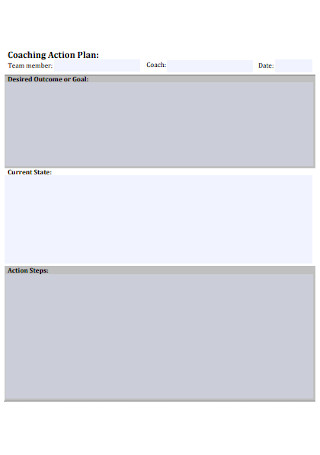
Sample Coaching Action Plan
download now -
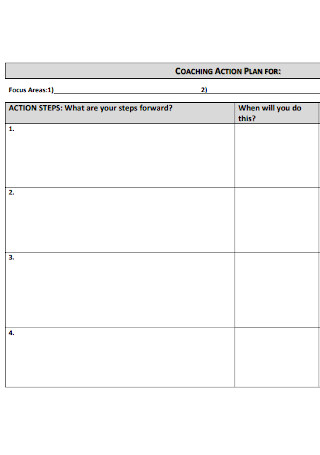
Simple Coaching Action Plan
download now -
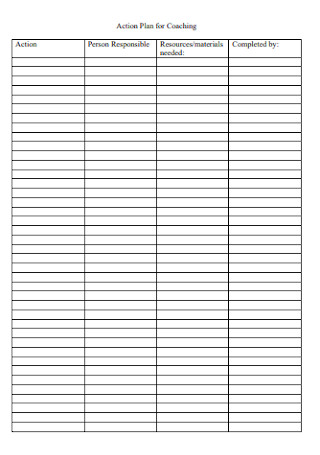
Action Plan for Coaching
download now -
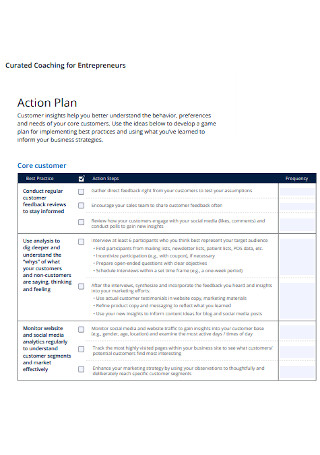
Coaching for Entrepreneurs Action Plan
download now -
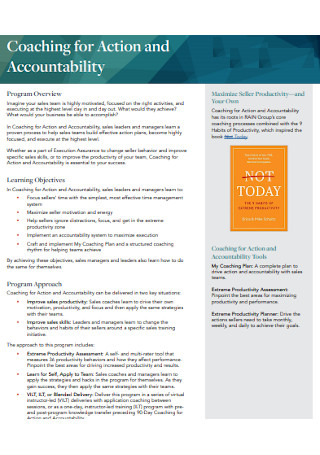
Coaching for Action and Accountability Plan
download now -
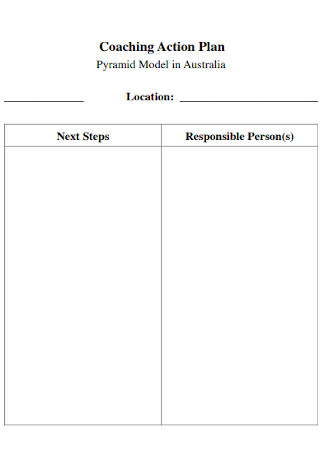
Coaching Action Plan Format
download now -
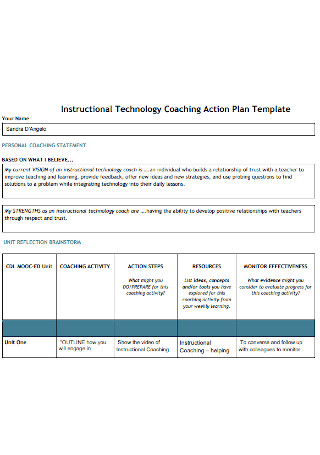
Instructional Technology Coaching Action Plan
download now -
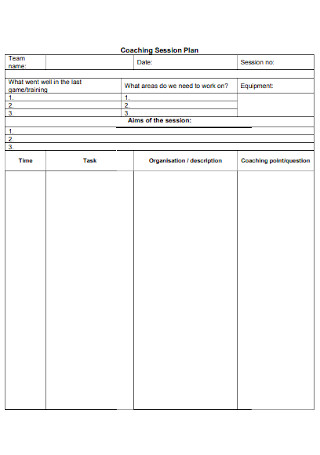
Coaching Action Session Plan
download now
FREE Coaching Action Plan s to Download
8+ Sample Coaching Action Plans
a Coaching Action Plan?
Benefits of Coaching Individuals
Tips on Creating an Action Plan
How To Create a Coaching Action Plan
FAQs
What coaching skills do you require?
What exactly is a single-use plan?
What is the difference between a single-use and a perpetual plan?
What Is a Coaching Action Plan?
A coaching action plan is a strategy used by managers to train, motivate, and improve the performance of their staff. You can work with each member of your team to set goals for improving their abilities and productivity. These goals may lead to advancement in their position and meaningful contributions to the organization. Working closely with employees to set short- and long-term career goals usually is part of a typical coaching plan. You’ll then hold regular meetings with them to check on their progress and identify areas where they may improve. Giving this employee positive praise and feedback as part of a strong coaching plan will drive them to keep working well. According to statistics, 80% of those who receive coaching claim higher self-confidence, and more than 70% report improved work performance, relationships, and communication skills. 86% of businesses claim to have recouped their coaching costs and more.
Benefits of Coaching Individuals
If you’ve ever been in a coaching association, you’re well aware that there are numerous advantages to participating in the process. The personal benefits of coaching are numerous, and if an individual engages with their coach, they can have a beneficial impact on their job. This technique can aid in developing individuals with a variety of needs and assist them on a personal level. Coaching has been shown to increase confidence, improve annual performance, and improve communication. The advantages can be considerably more extensive and tailored to a person’s needs. Here are six benefits that coaching can provide to individuals in your company.
Tips on Creating an Action Plan
Every success story is accompanied by a plan that is even more successful. When establishing an action plan to achieve a goal for the following year in a business, it is vital to delegate jobs and has a clear concept of who will be doing what work and when the task will be completed. After defining your vision, conducting a SWOT analysis, and establishing objectives, the action plan is often prepared at the end of the strategic planning process. Here are some pointers for putting together your action plan.
Work with a team.
The more your team members are involved in the task’s planning, the more invested they will be in its final accomplishment. People grow more emotionally invested in seeing their initiatives succeed as they spend more time working on them. Furthermore, by involving people from the ground up, you can gain a range of perspectives from employees at all company levels who may experience and see things that management isn’t aware of and new areas for improvement.
Tasks should be clearly defined and delegated.
Different jobs should be kept apart and completed by separate groups. This will aid in the avoidance of confusion as well as the facilitation of attention. Also, assign someone to be in charge and responsible for their team, and inform them of the available resources and the areas in which they can work.
Establish deadlines
After establishing the various tasks, a timeframe should be set to avoid procrastination. Without a precise end date, a job can feel insurmountable, as it will never be completed. Segmenting a task into timed intervals makes it possible to complete it on time without putting one person under undue stress.
Follow Up
Ascertain that tasks are not simply delegated and forgotten and that individuals are constantly followed upon. This can take the form of regular check-ins or meetings to ensure that milestones are met. Describe how you will ensure that each task list in your action plan is completed on time, for example, through the use of internal reporting or the service of regular meetings. This way, you’ll have a better idea of your progress toward your goal. Designate the metrics you will use to track the progress of the plan. These can be qualitative measures such as the number of tasks completed or quantitative measures such as daily sales or market share.
Communicate Transparently
Communication is another crucial aspect of an effective action plan. To avoid team conflict, make sure that everyone understands what is expected of them. People will always have a clear notion of what they need to do if open communication is encouraged from the start of the planning process.
Maintain Consistency
The most crucial stage is to keep the momentum going. Once the initial excitement of starting something new has worn off, it’s challenging to stay disciplined and motivated. The true challenge is staying motivated when you’re at your lowest point. Making a plan and deciding the logistics is only half the battle; putting it into action is the other. Analyzing the action plan and enhancing it for the next time after the deadline has passed is a sure-fire approach to create a successful business.
Early on, involve your team.
Your team’s participation will determine whether the action plan succeeds or fails. They should be involved from the start as you develop the action plan and other strategic plan components. Managers responsible for strategic planning should collaborate with their teams to identify projects and specific steps in the action plan and implement them. The idea is to take many excellent pictures, filter them to identify the most important ones, create a shortlist for detailed examination, and zero in on a few key actions that have the most significant potential to assist the company. By involving your team, you can ensure that the best ideas are considered, and employees support their implementation.
Designate Resources
If you’re managing a large project, you’ll almost certainly be delegating tasks to several people. Assess your team’s skills and abilities to determine who is best qualified to perform each task. Then, identify who will be responsible for the objective and the resources necessary to accomplish it, such as money, equipment, and personnel. For instance, if you’re in charge of a marketing campaign, you’ll want to determine which staff members excel at planning, content creation, social media marketing, and SEO. Additionally, it would help if you had content creation applications and tools and graphic design and marketing analytics tools.
How To Create a Coaching Action Plan
Clients require an exceptional coaching action plan to effect meaningful changes and growth in their employees’ professional lives. What exactly is a coaching strategy? A successful one communicates the required behavioral changes or skill enhancements to accomplish specific goals. They are critical in assisting employees in tracking their goals and objectives to achieve them. If you’re interested, here are some steps to take to create your own.
Step 1: Consult with Employees Regarding Your Proposed Changes
The first step in developing a coaching strategy is to speak with the company’s managers and supervisors. Discuss their perspectives and opinions on improving the management system, the expected output of employees, their relationships and culture, and any changes in employee engagement and its impact on the business. Additionally, discuss how you will communicate these changes to employees and coach them through them.
Step 2: Determine the Objective
The following step is to ascertain the objectives of the employees. Each must define the specific objectives that must be met to accomplish their objectives. Additionally, allow them to explain how and why these goals and target objectives will benefit the company significantly.
Step 3: Assess Employees’ Capabilities
Before establishing coaching activities for employees, evaluate all of the employees’ skills, strengths, and weaknesses and the influence these factors will have on their ability to achieve their goals. Additionally, this may assist you as a coach in focusing on areas where employees struggle and developing their skills to be more productive at work.
Step 4: Construct Coaching Activities
Now is the time to plan all coaching activities that will help employees achieve their goals. When coaching, two approaches are available: team coaching and one-on-one coaching. The advantages of each system are that group coaching can be beneficial for gathering a variety of feedback, whether supportive or critical and even for eliciting some suggestions and concerns that the coach may have overlooked during the coaching session. In contrast, one-on-one coaching can focus more on specific changes and improvements that employees need to make.
Step 5: Establish a Schedule
The final section of the action plan is to schedule each coaching activity. Decide when the coaching sessions will take place, how frequently they will occur, and how long they will last. To schedule your sessions, incorporate them into the company’s work calendar to avoid conflicting with previous engagements. This will also enable you to track everyone’s progress and address any issues during the timeframe. Given that coaching sessions will not last indefinitely, establish a deadline for each goal to motivate everyone to cooperate with the changes.
FAQs
What coaching skills do you require?
To be an active coach, one must be goal-oriented, possess superior observational abilities, empathize, be intuitive, and ask pertinent questions.
What exactly is a single-use plan?
Single-use plans are also referred to as specific plans,’ as they are designed to address a particular issue. These plans are created to address a one-of-a-kind and non-repetitive issue. Such one-time-use plans cannot be reused because they become obsolete once their purpose is accomplished.
What is the difference between a single-use and a perpetual plan?
Single-use plans are also referred to as specific plans,’ as they are designed to address a particular issue. These plans are created to address a one-of-a-kind and non-repetitive issue. Such one-time-use plans cannot be reused because they become obsolete once their purpose is accomplished.
Once you’re confident in your action plan, be prepared to explain to your colleagues that everyone is accountable for the work they do before implementing it. You should explain further if there are consequences if they do not meet their goal or any incentives for meeting the goal ahead of schedule. This will give you time to consider everyone’s feedback and make necessary revisions to your action plan. Refer to the sample templates provided above for assistance in developing a coaching action plan. They are all free to download, which means you can choose from a variety of templates!
